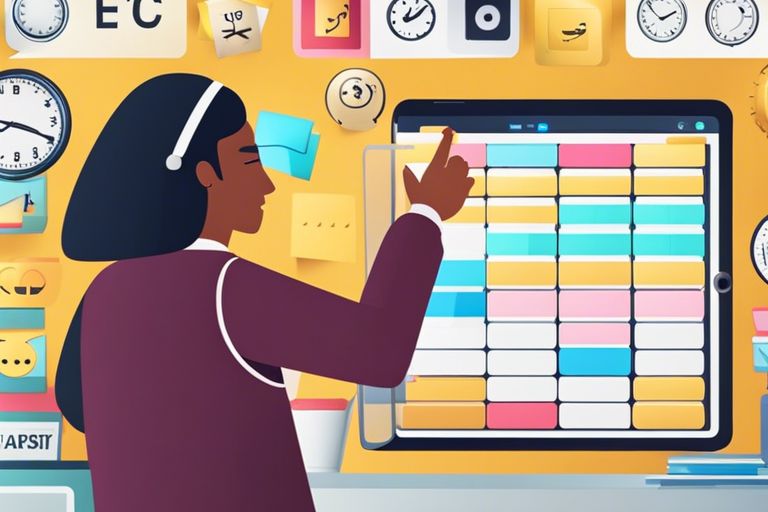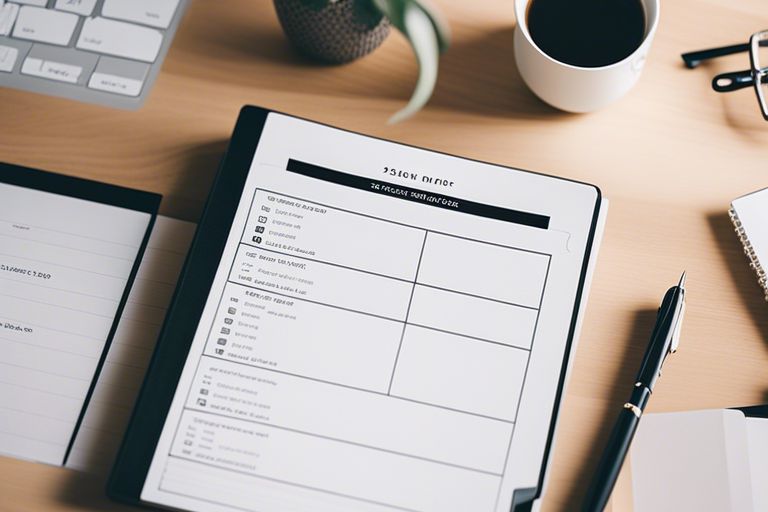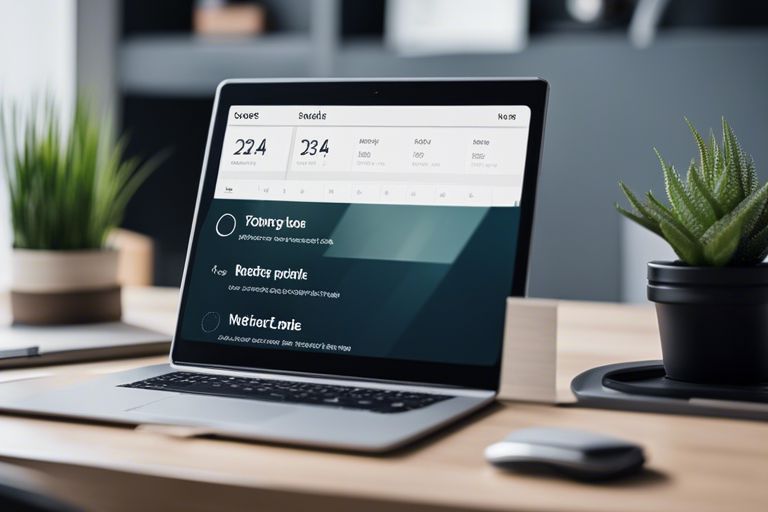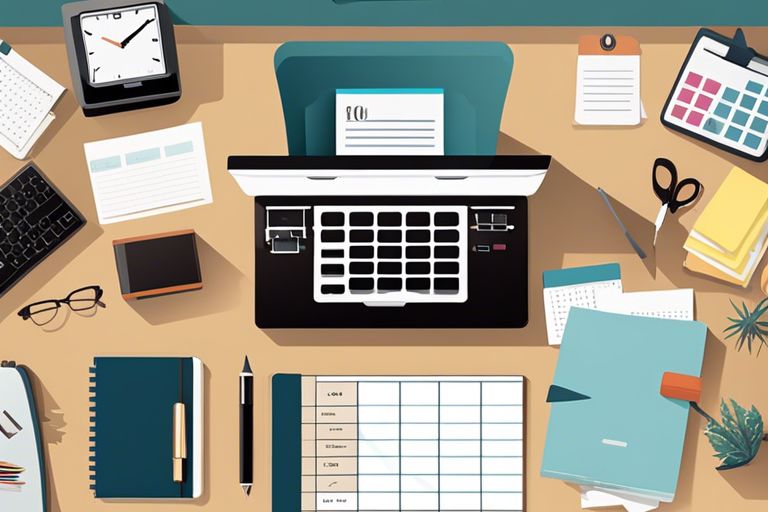The Importance of Effective Task Management
Effective task management is crucial for individuals seeking to improve their productivity and organizational skills. By understanding the concept of task management and the benefits it offers, individuals can conquer chaos and achieve their goals more efficiently.
Understanding Task Management
Task management is the process of planning, organizing, and executing tasks to accomplish specific objectives. It involves identifying tasks, prioritizing them, allocating resources, and monitoring progress to ensure timely completion. Effective task management involves implementing strategies and techniques to streamline workflows and maximize productivity.
Benefits of Effective Task Management
Implementing effective task management practices brings numerous benefits. Here are some key advantages:
Increased Productivity: Effective task management helps individuals stay focused and organized, ensuring that important tasks are completed efficiently. It reduces time wasted on unproductive activities and enables individuals to make the most of their available time.
Improved Time Management: Task management allows individuals to allocate their time effectively. By setting realistic deadlines, prioritizing tasks, and breaking them down into smaller steps, individuals can optimize their time and accomplish more within a given timeframe.
Enhanced Organization: Task management promotes better organization by providing structure to workflows. By categorizing and organizing tasks, individuals can easily track their progress, identify bottlenecks, and take necessary actions to maintain efficiency.
Reduced Stress: When tasks are properly managed, individuals experience reduced stress levels. Clear prioritization, realistic deadlines, and a well-structured approach to task completion help individuals feel more in control of their workload, leading to decreased stress and increased job satisfaction.
Improved Focus and Clarity: Effective task management helps individuals maintain focus on their goals and objectives. By breaking down tasks into smaller steps and setting clear priorities, individuals can avoid feeling overwhelmed and maintain a clear vision of what needs to be accomplished.
By adopting effective task management practices, individuals can experience improved productivity, reduced stress, and enhanced organization. Utilizing task management tools and implementing time management techniques can further enhance the effectiveness of task management strategies. To explore different task management tools, check out our article on task management tools.
In the following sections, we will delve deeper into task management best practices, task management tools, time management techniques, and strategies for streamlining task management. Stay tuned to discover the most effective approaches for conquering chaos and boosting productivity.
Task Management Best Practices
To conquer the chaos and improve productivity, implementing effective task management practices is essential. By following these best practices, individuals can enhance their organization skills and ensure tasks are completed efficiently.
Prioritizing Tasks
Prioritizing tasks is crucial to focus on what matters most and avoid feeling overwhelmed by a long to-do list. By assigning priorities, individuals can determine which tasks require immediate attention and which can be tackled later. One effective method for prioritization is using the Eisenhower Matrix, which categorizes tasks based on their urgency and importance. This helps in identifying high-priority tasks that need immediate action and prevents valuable time from being wasted on less critical tasks.
Breaking Down Tasks into Smaller Steps
Breaking down tasks into smaller steps is a powerful technique to enhance productivity and reduce overwhelm. By dividing larger tasks into manageable subtasks, individuals can approach them systematically and make progress more easily. Breaking down tasks also provides a clearer picture of the necessary steps and helps in identifying potential roadblocks. This approach allows for a more focused and organized workflow, leading to increased efficiency and a sense of accomplishment.
Setting Realistic Deadlines
Setting realistic deadlines is essential for effective task management. It helps individuals allocate their time wisely and ensures that tasks are completed in a timely manner. Unrealistic deadlines can lead to unnecessary stress and compromise the quality of work. By considering the complexity of the task, the available resources, and any dependencies, individuals can set deadlines that are achievable and reasonable. It’s important to remember that flexibility is also key, as unexpected challenges or new priorities may arise. Regularly reassessing and adjusting deadlines as necessary is vital to maintain productivity and manage workload effectively.
By implementing these task management best practices, individuals can optimize their productivity and effectively navigate their workloads. Prioritizing tasks, breaking them down into smaller steps, and setting realistic deadlines are fundamental strategies that contribute to better organization, increased efficiency, and reduced stress. Combine these practices with the right task management tools, such as task management software or task management apps, to streamline your workflow and stay on top of your tasks.
Utilizing Task Management Tools
Task management tools can greatly enhance your productivity and help you stay organized. Whether you prefer digital solutions, traditional paper-based systems, or a combination of both, there are various options available to suit your needs. In this section, we will explore digital task management tools, paper-based task management systems, and hybrid task management approaches.
Digital Task Management Tools
Digital task management tools offer a wide range of features and functionalities to streamline your task management process. These tools provide a centralized platform where you can create, organize, and track tasks efficiently. They often include features such as task creation, due date tracking, priority settings, and collaboration capabilities.
One of the main advantages of digital task management tools is their accessibility. With cloud-based solutions, you can access your tasks from anywhere, using multiple devices. This allows for seamless collaboration and real-time updates, especially when working in a team. Additionally, many digital task management tools offer integration with calendars, email clients, and other productivity apps, providing a comprehensive workflow management system.
When choosing a digital task management tool, consider factors such as ease of use, compatibility with your devices, and the specific features that align with your task management needs. For a detailed overview of different digital task management tools and their functionalities, check out our article on task management tools.
Paper-Based Task Management Systems
While digital solutions have gained popularity, many individuals still prefer the simplicity and tangibility of paper-based task management systems. These systems include physical notebooks, planners, and to-do lists that allow you to jot down your tasks, deadlines, and notes manually.
One advantage of paper-based systems is the tactile experience they provide. Writing down tasks can help improve memory retention and provide a sense of satisfaction when crossing off completed tasks. Paper-based systems are also free from digital distractions, which can enhance focus and reduce the temptation to multitask.
To effectively utilize paper-based task management systems, consider using a structured planner or notebook that allows you to categorize tasks, set priorities, and allocate time slots. Regularly review and update your paper-based system to ensure tasks are not overlooked or forgotten. For individuals who prefer the flexibility of paper-based systems but still want to incorporate digital features, consider using a smart notebook that allows you to digitize your handwritten notes and sync them with digital platforms.
Hybrid Task Management Approaches
Hybrid task management approaches combine the benefits of both digital and paper-based systems. This approach allows you to leverage the advantages of digital tools while retaining the tangible aspects of paper-based systems. For example, you can use a digital task management tool for long-term planning, collaboration, and recurring tasks, while utilizing a physical planner or to-do list for daily task tracking and quick notes.
Hybrid task management approaches offer flexibility and customization to cater to individual preferences and specific task management needs. By integrating both digital and paper-based systems, you can create a personalized workflow that maximizes productivity and organization.
When adopting a hybrid task management approach, it’s important to establish clear guidelines and workflows to ensure seamless integration between the digital and paper-based components. Regularly sync and update information between the two systems to maintain accuracy and avoid duplication.
By utilizing task management tools that align with your preferences and workflow, you can effectively organize and track your tasks, leading to improved productivity and reduced stress. Whether you opt for digital tools, paper-based systems, or a combination of both, the key is to find a solution that works best for you.
Time Management Techniques for Task Completion
In addition to effective task management practices, incorporating time management techniques can greatly enhance productivity and help individuals stay on track with their tasks. Here are three popular time management techniques that can aid in task completion: the Pomodoro Technique, Time Blocking, and the Eisenhower Matrix.
Pomodoro Technique
The Pomodoro Technique is a time management method developed by Francesco Cirillo. It involves breaking tasks into focused work intervals, typically 25 minutes in length, called “Pomodoros.” After each Pomodoro, a short break of 5 minutes is taken. After completing a set of four Pomodoros, a longer break of around 15-30 minutes is taken. This technique helps maintain focus and productivity by leveraging the power of time constraints, reducing the likelihood of procrastination.
By setting a timer and committing to working on a specific task for a designated period, individuals can concentrate on the task at hand without getting overwhelmed. The Pomodoro Technique is particularly useful for tasks that require deep focus and concentration. To get started with this technique, you can use various Pomodoro timer apps or set timers manually on your phone or computer.
Time Blocking
Time blocking is a time management technique that involves scheduling specific blocks of time for different tasks or activities throughout the day. By allocating dedicated time slots for tasks, individuals can better manage their time and ensure that important tasks receive the attention they deserve.
To implement time blocking, start by identifying the tasks that need to be completed and estimate the time required for each task. Then, allocate specific time blocks in your schedule for these tasks. During the allotted time, focus solely on the task at hand, avoiding distractions and interruptions. By adhering to your time blocks, you can enhance productivity, maintain focus, and prevent tasks from spilling over into other time slots.
Eisenhower Matrix
The Eisenhower Matrix, also known as the Urgent-Important Matrix, is a time management tool that helps prioritize tasks based on their urgency and importance. It divides tasks into four categories:
| Quadrant | Description |
|---|---|
| Quadrant 1: Urgent and Important | Tasks that are both urgent and important, requiring immediate attention. |
| Quadrant 2: Not Urgent but Important | Tasks that are important but not urgent, such as long-term planning and goal setting. |
| Quadrant 3: Urgent but Not Important | Tasks that are urgent but not important, often involving interruptions and distractions. |
| Quadrant 4: Not Urgent and Not Important | Tasks that are neither urgent nor important, often time-wasting activities that should be minimized. |
By categorizing tasks into these quadrants, individuals can prioritize their time and focus on tasks that align with their goals and responsibilities. The goal is to spend more time in Quadrant 2, where important but non-urgent tasks reside, to prevent tasks from becoming urgent and reduce stress.
By incorporating these time management techniques into your task management practices, you can optimize your productivity and time utilization. Whether you choose to utilize the Pomodoro Technique, time blocking, or the Eisenhower Matrix, finding a technique that aligns with your work style can significantly enhance your task completion efficiency.
Streamlining Task Management
Efficient task management is key to staying organized and productive. To streamline your task management process, there are several strategies you can implement. This section will explore three essential practices: minimizing distractions, delegating and outsourcing tasks, and regularly reviewing and adjusting task lists.
Minimizing Distractions
Distractions can derail your productivity and hinder effective task management. To minimize distractions, consider implementing the following strategies:
Create a Distraction-Free Environment: Find a quiet space where you can focus on your tasks without interruptions. If possible, eliminate visual and auditory distractions by closing unnecessary tabs, turning off notifications, and using noise-cancelling headphones.
Practice Time Blocking: Allocate specific time blocks for focused work on your most important tasks. During these blocks, eliminate distractions by turning off your phone or using apps that temporarily block access to social media and other distracting websites.
Implement the Pomodoro Technique: The Pomodoro Technique involves working in short bursts of intense focus, typically 25 minutes, followed by a short break. This technique helps maintain concentration and increases productivity by breaking tasks into manageable chunks.
Delegating and Outsourcing Tasks
Delegating and outsourcing tasks can help alleviate your workload and free up time for more important responsibilities. By effectively delegating tasks to capable individuals or outsourcing tasks to external resources, you can streamline your task management process. Consider the following steps:
Identify Tasks for Delegation: Determine which tasks can be effectively delegated to others. Focus on tasks that require less specialized knowledge or can be easily taught to someone else.
Delegate to Competent Individuals: Delegate tasks to individuals with the necessary skills and resources to complete them successfully. Clearly communicate expectations, deadlines, and provide any required instructions or resources to ensure a smooth transition.
Outsource Non-Core Functions: For tasks that are outside your area of expertise or take up significant time, consider outsourcing to freelancers, virtual assistants, or specialized service providers. This allows you to focus on your core responsibilities.
Regularly Reviewing and Adjusting Task Lists
Regularly reviewing and adjusting your task lists is essential for effective task management. By periodically assessing your progress and making necessary changes, you can ensure that your tasks align with your goals and priorities. Follow these practices:
Daily and Weekly Reviews: Set aside time each day and week to review your task lists. Evaluate completed tasks, update priorities, and identify any new tasks or changes that need to be made.
Reassess Priorities: As circumstances change, it’s important to reassess task priorities. Prioritize tasks based on urgency, importance, and their alignment with your overall goals. Refer to our article on task prioritization methods for additional guidance.
Adapt and Adjust: Be flexible and willing to adjust your task lists as needed. Embrace agile task management practices that allow for adaptability and responsiveness to changing priorities and circumstances. Learn more about agile methodologies in our article on agile task management.
By minimizing distractions, delegating or outsourcing tasks, and regularly reviewing and adjusting task lists, you can streamline your task management process and improve your overall productivity. Experiment with these strategies and find what works best for you. Remember, effective task management is a continuous process of improvement and adaptation.








